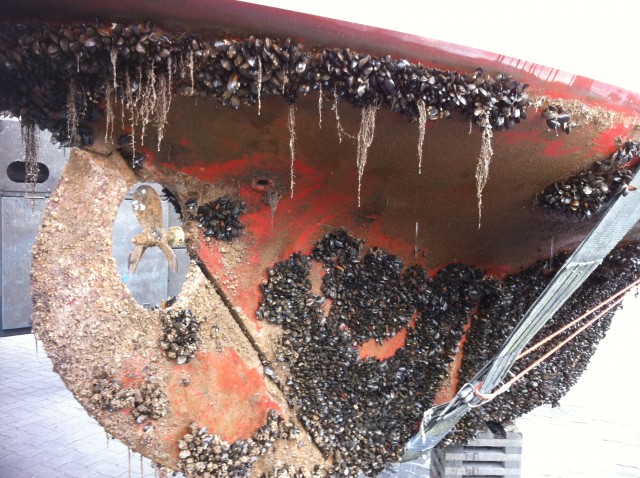Dive it or Haul it?
Sometimes it’s hard to tell if you need new bottom paint or not. Maybe the boat is new to you and nobody knows when it was last painted. Maybe you think it should be painted but it looks pretty clean. If your bottom is dirty, it may just be that the boat hasn’t moved in a long time. When people find out we both dive boats and do haulout work, we often get asked, Should I dive it or haul it?
Some of the questions that need to be answered are:
- What kind of paint was previously applied?
- When was it done and how much was applied?
- How often was the boat used since then, and how much will it be used?
- How long is it before the next planned haulout?
If the bottom paint is spent, the boat needs to be hauled out so that more can be applied. It may be possible in some circumstances to “stretch” a paint job by cleaning it in the water, but the longer spent antifouling is left in the water the more broken-down and rough it gets, which hastens the day it all has to come off.
If, on the other hand, the boat is just dirty because it hasn’t moved very much — all bottom paints perform better if the growth is kept at bay, either by a regular clean or lots of sailing — you may very well be able to get another season out of it.
If you have an insurance survey coming up, or if you have inboard/outboard legs, you’re probably better off hauling the boat than having us dive it. Drive legs are just not economical to clean in the water — and the pressure washer does a better job, anyway — and if you haul it out you can have the legs serviced by a mechanic at the same time.
When the time does come to renew the bottom paint, there are a few considerations. Because of the variety of ways that different paints leach biocide, compatibility is a major issue to consider. Generally, the simplest and most affordable approach is to put on more of whatever paint was previously applied. In this case, prep work can range from just a pressure wash to a relatively light sanding of the whole hull.
Some paints can be applied over an unknown previous coat with a light sanding, but it may be better to sand more aggressively and change to a preferred paint. If the existing paint is significantly broken down, or poorly adhered to the hull, it may be time to strip it and start from scratch. In that case, we usually recommend an epoxy barrier coat to prevent osmotic blistering and improve paint adhesion, then two or three coats of the antifouling of your choice. For more information, please see our Antifouling page. For pricing, please see our Rates page.

